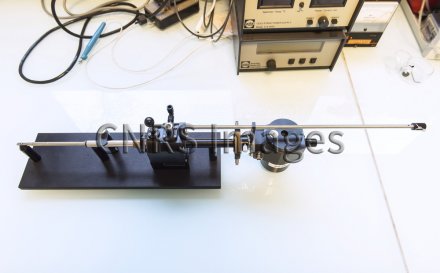Production year
2013

© Cyril FRESILLON/CNRS Images
20130001_0295
Porte objet cryogénique permettant de transférer des échantillons de matériaux nanostructurés très réactifs à l'air, sans jamais les mettre en contact avec l'atmosphère. Ce transfert s'opère depuis la chambre réactionnelle où ils sont préparés, jusque dans le microscope électronique à transmission. Les échantillons, souvent fragiles, peuvent aussi être endommagés par irradiation électronique (échauffement) dans le microscope. Le porte-objet peut alors être refroidi à la température de l'azote liquide, ce qui permet d'observer les échantillons sous le faisceau à très basse température, sans qu'ils ne se décomposent. Ces matériaux nanostructurés sont utilisés pour le stockage de l'hydrogène ou les électrodes négatives de batteries lithium-ion. Ils sont analysés pour déterminer leurs propriétés de stockage.
The use of media visible on the CNRS Images Platform can be granted on request. Any reproduction or representation is forbidden without prior authorization from CNRS Images (except for resources under Creative Commons license).
No modification of an image may be made without the prior consent of CNRS Images.
No use of an image for advertising purposes or distribution to a third party may be made without the prior agreement of CNRS Images.
For more information, please consult our general conditions
2013
Our work is guided by the way scientists question the world around them and we translate their research into images to help people to understand the world better and to awaken their curiosity and wonderment.